Feeding Raw Bones for Cats and Dogs
Feeding Raw Bones to Dogs and Cats
Background
Eating raw bones is as completely natural as eating fresh meat for dogs and cats. They come hand in hand, in the
wild. Both dogs and cats are natural hunters, cats always eating their food fresh, and dogs happy to eat fresh, or
decaying. Either way, catching and eating prey has always involved the consumption of bones.
Feeding bones to domestic dogs has been a time honoured tradition, and is still practiced by knowledgeable dog
breeders and pet owners. The feeding of bones to cats has had less emphasis in the past, as cats have always
been able to catch and eat their own prey, complete with bones. Since the advent of “ready to serve” commercial
pet foods, there has been a noticeable decline in the practice of feeding bones to dogs by many pet owners,
particularly raw bones. And now that the modern domestic cat’s natural hunting abilities have been limited by
their confinement, there is a marked decline in the consumption of raw bones by cats also.
Benefits
Raw bones are consumed first and foremost for their nutritional value to the cat or dog. A natural, and highly
digestible source of calcium is provided by raw bones, and is required to provide a natural balance to the higher
levels of phosphorous found in raw meat.
Adequate calcium is vital for normal growth and development, for correct mineralization (strength) of the teeth
and bones, and structure of joints. It is vital for muscular contraction in the body, including the heart muscle, and
is involved in a wide array of metabolic processes. The calcium in raw bones can be up to 4 times more digestible
than most common calcium supplements available. Bones also supply smaller amounts of cartilage, bone marrow,
and other minerals, like boron, which are vital for bone and joint health.
Raw bones also play an integral role in dental hygiene for dogs and cats. The process of macerating the meat and
bones actually massages the animal’s teeth and gums, cleaning away any food residues or tartar development.
This prevents plaque formation, bad breath, dental cavities, gingivitis, and expensive veterinary teeth scaling and
extractions. A good supply of calcium and other nutrients during the early growth stages of puppies and kittens
will also help to ensure strong healthy teeth. And finally, a good bone feed actually has a beneficial effect on the dog or cat’s digestive tract. It has a cleansing/scouring effect, providing much needed roughage in the diet, and provides bulk for healthy faecal motions that
stimulate anal gland emptying
Why raw?
The benefits of eating bones are greatly reduced by cooking, and it can actually create dangers. Cooking bones
renders the natural calcium almost unavailable for absorption, losing that vital source of mineral availability.
Cooked bones are much tougher, and more brittle than raw bones, and will actually blunt animal’s teeth after
regular chewing, or can even cause broken teeth. They also break into large chunks more easily, and can result
in your pet swallowing a piece too large to digest, and then a quick visit for some veterinary attention as cooked
bones do not digest or breakdown in the stomach.
Bones for Dogs
The basic guide for choice of bones is really decided by the size of the dog. Large dogs can handle larger bones,
like lamb necks, lamb shanks, beef leg bones, whole rabbit, whole chickens or chicken carcasses, kangaroo tails.
Smaller dogs will fare better with chicken frames, chicken necks or wings, lamb flaps, brisket bones, ribs etc. My
favorites are Kangaroo tails and chicken frames.
Remember that there are two distinct types of bones; those that are eaten easily and quite quickly, are nutritional,
and provide all of the above listed benefits. Bones that are too large or tough, and end up scattered over the back
yard, or buried in the lawn, and dug up or chewed on over many days, are more of a “toy”. They offer some
dental hygiene effects, but minimal nutritional effect. They do however; keep many a dog happy for several hours
a day. Try and get bones with some meat left on, as it encourages the dog to exercise the front incisor teeth while
tearing at the meat. This is very important during puppy-hood, when the milk teeth are replaced by the adult teeth.
The chewing and tearing action helps to dislodge the puppy teeth, and allow normal progression of the adult teeth.
Bones for Cats
Cats will prefer slightly softer, smaller bones. Chicken necks and wings are the most popular, as are rabbit pieces,
and smaller Kangaroo tails. My cats happily devour an entire chicken carcass with ease, and will tackle a large
Kangaroo tail, but usually leave the big bones for the dogs to clean up. Many people I see in practice do not
believe cats can eat bones, but once you have seen them devour a rabbit, head first, you understand they are quite
capable and many cats just prefer to avoid the hard work!
It can be hard to get an adult cat to start eating bones if it is not used to eating fresh meat. It can be equally hard
if they already have bad teeth, or need dental help. The best thing is to get your cat started as early as possible,
as a kitten, and then keep up a regular routine.
How often?
Puppies and kittens should have a bone offering every day during their growth phase. For cats and small breed
dogs, this ends around 6-12 months of age, for medium sized dogs at 12-18 months, and for large and giant
breeds, at 2 years old. Puppies and kittens can tackle soft macerated meat and bone pieces as soon as they
develop their milk teeth, at around 4-5 weeks old. Adult dogs and cats can still happily eat a bone every day, but
can get by with bones at least twice weekly. Older pets should get more bones, as they start to need more calcium
in old age to maintain good health and prevent arthritis.
What to avoid
Avoid cooked bones full stop. As a general rule, avoid bones of a size that will tempt the dog to swallow them
without chewing, they can still get caught in the gut, or wedged across the roof of the mouth. I have once seen a
Labrador, that choked and died trying to swallow a whole lamb neck. Although whole raw bone will digest slowly,
it does not yield as much health value to the dog, as a well-chewed raw bone.
Also be wary of feeding bones if you don’t feed any other raw meats in the diet, as the gastric acidity can be
significantly diminished by processed kibble diets. (Refer “Gut Acidity” article)
This article was written and authorised by:
Dr Bruce Syme BVSc (Hons)
Founder of Vets All Natural
For more information visit www.vetsallnatural.com.au
This article or parts thereof can only be used with written permission from Vets All Natural. Contact info@vetsallnatural.com.au
Dr Bruce Syme is a practicing vet and animal lover who founded Vets All Natural in 1996 with a simple mission, to “Improve the health and longevity of dogs and cats”. Dr Bruce is an expert in natural pet nutrition, has spoken at the Australian Veterinary Association Annual Conference, and provides regular comment on TV and Radio.
Disclaimer: The entire contents of this article are based upon the opinions of Dr. Bruce Syme, unless otherwise noted. The information is not intended as medical advice, it simply shares the knowledge and information from the research and experience of Dr. Bruce and his community. Pet health care decisions should be based upon your research and in partnership with a qualified pet health care professional.
© Copyright 2015 Dr Bruce Syme and Vets All Natural. All Rights Reserved.
search for articles
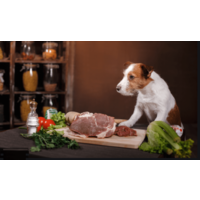
Understanding different food options for your pets
Author: Best for Pets Date Posted: 7 November 2020
A short guide to different feeding options for your pet Like humans there is becoming a huge amount of information on views on how to feed you puppy. I hear this so often that the “breeder” recommended this or the "Vet" recommend that. It is not to say they are wrong but there are so many factors to take into consideration. The important thing is to understand that building good gut health does not come from one source and a diet with variety will help build good health for the life of the puppy through to adulthood So lets explore a few options in feeding your pet Biologically App...
Read more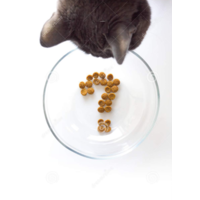
Understanding dry food labels
Author: Bill Wiadrowski
Lets see what the experts say on dry food When you're looking at the ingredient label on dog food, how can you tell if it's quality nutrition? What should I be looking for? Producing a label for pet food is something of an artform. Obviously, the seller is attempting to enhance the positive aspects of the food and the perceived point of difference, whilst down-playing or ignoring the negatives. Attempting to unravel the mystery of what is actually in the bag can be quite difficult, but there are a few tel...
Read more
Key steps to building a healthy future for your puppy
Author: Best for Pets Date Posted: 7 November 2020
Key steps to building a healthy future for your puppy We know that your puppy's health is your priority. Giving your puppy the right care and attention early on will help to ensure they live a long and healthy life. The first few months play a crucial role in your puppy’s long-term growth, development and health. Aside from ...
Read more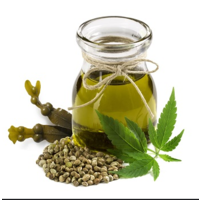
Hemp Seed Oil The NEW Super Food for your Pets
Author: Best For Pets
Why is everyone getting excited about Hemp Seed Oil for their Pets? Until recently Hemp Seed Oil was hardly heard of – now it is everywhere. And with good reason; we have barely scratched the surface of how the therapeutic benefits of Hemp Seed Oil, but the results are certainly proving to be a winner for your pet. It may not solve all your problems, but it is an affordable option for many when comparing some of the expensive treatments that are getting recommended. Certainly, value for money and like most things it can take a few weeks to start see...
Read more
Dealing with Allergies
Author: Best for Pets Date Posted: 5 May 2020
Improving your Dogs Health So many discussions around remedies for dogs with allergies is extremely confusing for many dog owners. It can be really disheartening trying to solve your dog’s allergies. Whether your dog’s allergies appear in the form of itchy skin, ears or feet, or digestive problems like chronic diarrhea, allergy symptoms can make life miserable for both your dog and you. An allergy is a state of over-reactivity or hypersensitivity of the immune system to a particular substance called an allergen . Most allergens are proteins from plants, insects, animals, or foods. Examp...
Read more
DCM - Dilated Cardiomyothpy some things you need to know
Author: Best for Pets Date Posted: 12 July 2019
Dilated Cardiomyopathy (DCM) With so much news an around DCM and what you feed your dogs lets have a look at what we know. First of all there have been approx 560 cases in USA diagnosed since 2014. 7 cases were reported between 2014 and 2017 and was not until the the Food and Drug Administration(FDA) in the USA was made aware by a group of veterinary cardiologist in the North West there was some concerns based on the following two factors: 1) not known breeds were being diagnosed DCM 2) most had been eating grain-free diets prior to diagnosis The FDA released its ...
Read more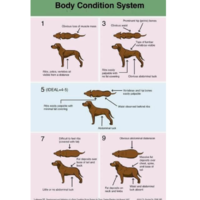
Keeping your dogs weight healthy through the winter months
Author: Best for Pets Date Posted: 26 May 2019
Keeping your dog health y through the winter months When it comes to the seasons changing, we all know that humans tend to pack on a little extra weight over the winter months. A lack of exercise and the ability to go outdoors makes it easy for us humans to get off track. But when it comes to dogs, their bodies are actually programmed to help them survive in cooler conditions. A lot of this is instinct, and we can’t do much about it. The one thing you can do is to adjust your dog’s diet. Let’s take a look at some of the reasons why your dog’s diet may need to change this winter season How Does Colder Temperatures Affect Wei...
Read more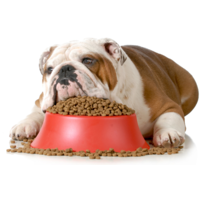
Some facts about dry food
Author: Lisa Caines Date Posted: 16 September 2018
Buying premium dry food does matter Your dog depends completely on you for health and happiness, so it is important that you understand your dog's dietary requirements. As a good dog owner, you will have to consider what type of dog food is the best option for your furry companion. Dry dog food provides a very cost-effective way to provide your dog with all the nutrients and vitamins needed for its good health and long life. Although many dog owners have moved away f...
Read more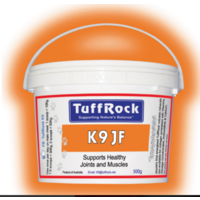
Find out the truth about Tuff Rock K9 Joint Formula
Author: Lisa Caines
What is the truth about Tuff Rock K9 Joint Formula? It works and works well, having bought and sold many products for dogs who have soreness of various descriptions over the years I can not go past this product. I have had customers where senior dogs who were struggling with getting up, middle aged dogs who showed signs of soreness after certain activities and young dogs in their prime all show significant long term improvement after using Tuff Rock K9 JF. What is even better is that it is holistic product with no hidden nasties in it so it cant be a bad...
Read more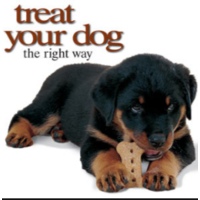
Choosing the right treats for your dog
Surely there is no such person as a dog owner who never gives his or her dog a treat. We all like to see our dog’s tail wag, and his face light up with attentive anticipation, right? But how do you know that the treats you give him are healthy? It’s actually pretty simple. As with every food you buy (for yourself or your dog), it’s all about the ingredients. If you do not already read the label of every food item you consider buying, get in the habit! Most of the information you need to know in order to determine the product’s quality is legally required to appear on the label. Things to look for Australian Made – t...
Read more
Three reasons your dog might be missing something in their diet
3 signs that your dog might be missing out on something in their diet Eating a lot of dirt or grass, dogs when missing something they will generally crave for it and as they do not have the opportunity to be selective in supplements to support any deficiencies, they will then look for these nutrients from either dirt or grass. Coat condition becoming dull even though they may be on a balanced diet can be a good indicator that there is still something missing from their diet. Their coat is a reflection from the inside out and how everything is travelling so any changes in coat condition should be investigated If you feel your dog is a bit lethargic f...
Read more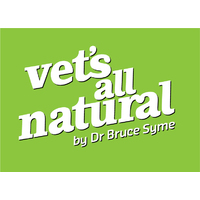
Feeding Raw Bones for Cats and Dogs
Author: Dr Bruce Syme
Feeding Raw Bones to Dogs and Cats Background Eating raw bones is as completely natural as eating fresh meat for dogs and cats. They come hand in hand, in the wild. Both dogs and cats are natural hunters, cats always eating their food fresh, and dogs happy to eat fresh, or decaying. Either way, catching and eating prey has always involved the consumption of bones. Feeding bones to domestic dogs has been a time honoured tradition, and is still practiced by knowledgeable dog breeders and pet owners. The feeding of bones to cats has had less emphasis in the past, as...
Read more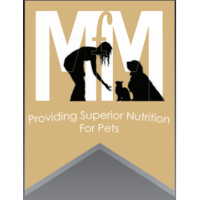
Bindi's Story
Author: Meals for Mutts
Bindi is one of many dogs we are currently helping, but she is also one of the more severe cases w...
Read moreComments (2)
pet
19 April 2020Awesome! No words. You always go one step beyond. There is so much great, useful information here. Thank you! Thank you! Thank you! Read our guide if you wish. <a href="https://www.toppetlovers.com/can-cats-eat-dog-treats/"> toppetlovers </a> Thanks again :)
Stands back from the
11 October 2016Stands back from the keyboard in ammztaene! Thanks!






